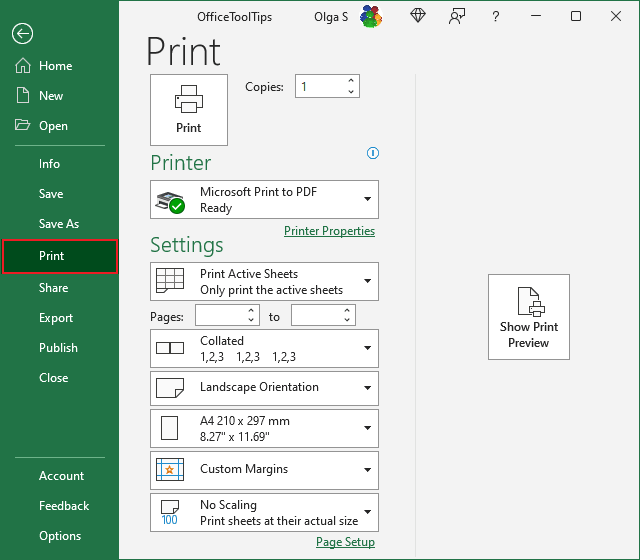5 Ways to Print Excel Sheets with Perfect Page Breaks

Printing an Excel spreadsheet correctly often involves understanding how to manage page breaks effectively. It's frustrating when your printed Excel sheets are cut off mid-way through crucial data or charts. This article will guide you through five effective ways to ensure your Excel sheets are printed with perfect page breaks.
1. Use Manual Page Breaks

Sometimes, Excel’s automatic pagination isn’t suitable for your needs. Here’s how you can manually set page breaks:
- Select the row or column where you want to insert the page break.
- Go to the Page Layout tab.
- Click on Breaks, then choose Insert Page Break.
- The page break will be inserted before the selected cell or row.
👉 Note: Remember to periodically check your page breaks as modifying your data might cause automatic page breaks.
2. Adjust Page Layout Settings

Excel provides various settings to manage page layout:
- Navigate to the Page Layout tab.
- Set your Page settings like orientation (portrait or landscape), scaling, and margins.
- Adjust Print Area to print specific cells or ranges.
- Modify Sheet Options to include gridlines, column and row headers.
📝 Note: Landscape orientation can be helpful when dealing with wide data sets to avoid extra pages.
3. Set Print Titles

If your data spans multiple pages, setting print titles helps keep your headers on each printed page:
- Go to Page Layout > Print Titles.
- Select the rows or columns you want to repeat at the top or left side of each page.
4. Utilize the Page Break Preview

To visually adjust page breaks:
- Switch to the View tab.
- Click Page Break Preview.
- Drag the blue dashed lines to adjust page breaks manually.
👁 Note: Using Page Break Preview gives you a clearer view of how your data will appear on printouts.
5. Print Preview for Final Adjustments

Before you hit print, always check the print preview:
- Press File > Print or Ctrl + P.
- Review the preview, adjusting settings if necessary:
- Fit to one page if necessary.
- Set print area for specific data.
- Adjust header/footer content.
In conclusion, mastering the art of printing Excel spreadsheets with perfect page breaks involves a combination of manual adjustments, understanding Excel's page layout settings, and reviewing your printouts. By implementing these techniques, you'll ensure that your printed sheets present data in a way that's both clear and professional, avoiding common printing pitfalls like cut-off text or missing headers.
How do I reset all page breaks in Excel?

+
To reset all page breaks, go to the Page Layout tab, click on Breaks, and select Reset All Page Breaks. This will remove all manual page breaks, allowing Excel to automatically paginate your data again.
Can I print Excel sheets without gridlines?

+
Yes, you can choose not to print gridlines by going to Page Layout > Sheet Options, under Gridlines, uncheck Print.
Why are my page breaks not where I want them?

+
Excel might move your page breaks due to changes in your data or printer settings. Always check the Page Break Preview and make necessary adjustments before printing.
How can I ensure that my charts are printed on the same page as the related data?

+
To keep charts with their data, manually set page breaks around the chart area and adjust the scale in Print Settings to ensure everything fits on the same page.
What if my page setup isn’t working as expected?

+
If adjustments aren’t reflecting in print preview, ensure that your Excel file is not set to automatic pagination, and check for any conflicting printer settings.